The Challenge of ACL Injuries
The anterior cruciate ligament (ACL) is the largest ligament in the knee that connects the thigh bone and the calf bone. ACL injuries refer to partial or complete rupture of the anterior cruciate ligament and are common in intense sports such as football, basketball, and skiing. Patients usually hear the sound of ligament rupture in the knee joint at the time of injury, followed by severe pain, swelling, and an inability to straighten the knee joint.
If an ACL injury isn't treated right away, the patient may experience knee instability and, in severe cases, difficulty moving the knee. Depending on the severity of ACL injury, it can be treated with physical therapy and surgery. However, these treatment methods usually require long rehabilitation periods and discomfort, and they may not fully restore mobility.
So, what can help ACL injury patients to walk and live normally? Red light therapy is one of the promising solutions that can potentiate the recovery process and reduce post-injury pain and inflammation.
Can Red Light Therapy help with the ACL injuries?
Yes, red light therapy can help in ACL recovery by reducing inflammation, relieving pain, and accelerating tissue healing.

This treatment involves using specific wavelengths of light that go deep into the tissues, stimulating cellular repair processes. Red light treatments are non-invasive approaches that depend on the use of light wavelengths, usually between 630 and 850 nanometers, to stimulate cellular activity. The increased energy at the cellular level boosts the speed of tissue repair, reduces edema, and releases natural painkillers like endorphins.
Unlocking ACL Recovery Benefits with Red Light Therapy
Red light therapy is a targeted treatment that specifically addresses the special needs of patients with ACL injury. It penetrates damaged knee tissue deeply by delivering red and near-infrared therapeutic wavelengths of light treatment, thereby aiding in healing and recovery in various ways.
Reducing Inflammation and Pain
RLT is important in pain and inflammation management after an ACL injury or knee reconstruction surgery. This treatment acts through the stimulation of cellular processes that reduce the production of inflammatory cytokines, which are responsible for swelling and pain. Modifying these inflammatory responses promotes the release of endorphins – body natural painkillers. This further helps to manage pain without the intake of pain relief medications. Effective pain management with RLT also assists patients in returning to their rehabilitation exercises quickly.
Accelerating Tissue Healing
RLT simply provides the cells with the needed energy (ATP) by photobiomodulation to repair and regenerate. This process speeds up blood flow around the knee, which helps deliver nutrition and oxygen to the ACL injury site and removes metabolic waste products. It is well-studied that red light therapy potentially hastens the healing processes of injured ligaments and surrounding tissues by microcirculation.
Strengthening Joint Function
By stimulating collagen production, red light can strengthen the ligaments and surrounding tissues, providing better structural support to the knee, thus preventing further injury and improving the long-term stability of the joints. Further, RLT may reduce swelling and stiffness post-surgery, which enhances the range of motion during rehabilitation. When combined with the other components of a comprehensive recovery program, this offers the chance to maximize healing and may reduce the overall healing period.

When should you consider Red Light Therapy for ACL Injury?
It is safe to start using red light therapy once the surgical wounds have healed or upon your doctor's advice. RLT can be effective in the following stages of recovery from the ACL injury:
- Pre-operatively: It relieves pain and inflammation to prepare for joint reconstruction surgery.
- In Physical Therapy: The use of laser accelerates the healing processes in tissues, reduces pain, and improves mobility during rehabilitation.
- Long-term: This could be used to manage chronic pain or simply maintain healthy joints following recovery from an ACL injury.
Important Considerations When Using Red Light Therapy
Consult with a healthcare professional: Always consult your healthcare provider before initiating red light therapy in case of ACL injury or surgery. They can provide personalized recommendations for the safe and effective use of this modality.
Choose the appropriate device: Select the device with red light therapy wavelengths between 630 to 850 nanometers and find reputable brands that qualify for the safety standards.
Follow Usage Guidelines: For best results, keep the treatment duration between 20 and 40 minutes, according to the manufacturer's instructions and keep the recommended distance from the skin.
Is Red Light Therapy Safe for ACL Injury?
Generally speaking, red light therapy does not pose any risks for patients recovering from ACL injuries. Several studies prove its effectiveness and lesser side effects. The reported side effects are usually mild and not very common, such as temporary redness or warmth at the treatment site. Research studies published in the Journal of Arthroplasty indicated that red light therapy significantly improved pain management and range of motion in patients recovering from knee injuries.
As a non-invasive treatment, it eliminates the risks of complications that would be caused by surgical intervention. It successfully reduces pain and inflammation without destroying the nearby tissues.
Harnessing Red Light Therapy for ACL Recovery
Red light therapy (RLT) reduces inflammation, which means decreasing swelling and associated pain and speeding healing of tissues after an ACL injury. RLT can stimulate cellular processes and blood circulation, which complement the recovery and enhance the joint's stability. Red light therapy is noninvasive and safe for people to use. However, it’s always important to consult with a healthcare provider when using RLT, and also follow the usage guidelines for the best efficacy.
References
- Glass G. E. (2021). Photobiomodulation: The Clinical Applications of Low-Level Light Therapy. Aesthetic surgery journal, 41(6), 723–738. https://doi.org/10.1093/asj/sjab025
- Kaneguchi, A., Ozawa, J., Minamimoto, K., & Yamaoka, K. (2022). Low-level laser therapy attenuates arthrogenic contracture induced by anterior cruciate ligament reconstruction surgery in rats. Physiological research, 71(3), 389–399. https://doi.org/10.33549/physiolres.934796
- Bahrami, H., Moharrami, A., Mirghaderi, P., & Mortazavi, S. M. J. (2022). Low-Level Laser and Light Therapy After Total Knee Arthroplasty Improves Postoperative Pain and Functional Outcomes: A Three-Arm Randomized Clinical Trial. Arthroplasty today, 19, 101066. https://doi.org/10.1016/j.artd.2022.10.016



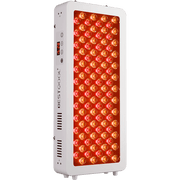










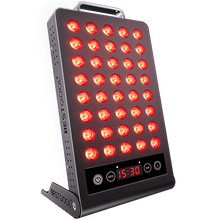
 Small
Small
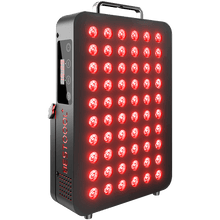
 Moderate
Moderate
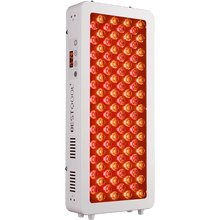
 Moderate
Moderate
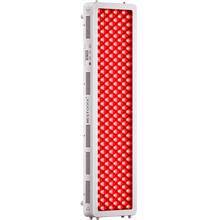
 Moderate
Moderate
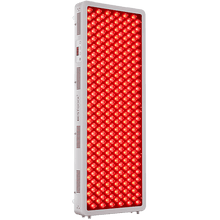
 Full
Full



